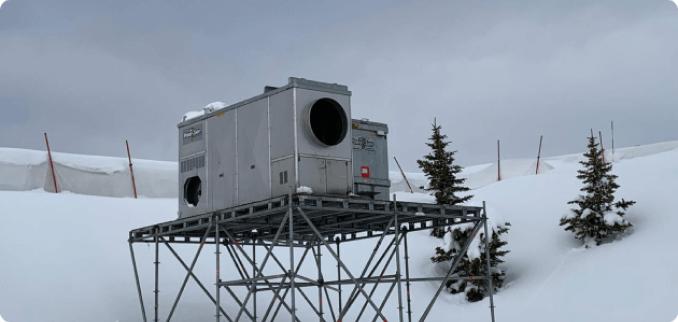To get a grip on the consumption and behavior of tenants of social housing and flats, Calculus, together with a consortium of Dutch and Flemish companies and knowledge institutions, is working on a modular kit called GO-kit. This kit includes sensors, gateways, connectivity, dashboards and AI algorithms and can be rolled out to other social housing and building projects once this project is completed.
The Internet of Things (IoT) and artificial intelligence (AI) are two technologies that are rapidly advancing and changing the way we live and work. One area where these technologies are having a significant impact is in reducing energy and maintenance costs.
IoT building management system for social housing
Energy Monitoring
By using sensors in the social housing units, the consortium , completely anonymously of course, gets visibility into real-time data on any energy generated from solar panels and the homes' own energy consumption . This information is then analyzed and used to optimize energy consumption, switch large consumers remotely and identify areas where costs can be reduced.
Indoor climate monitoring
If it is detected that a specific room or space is not being used, the lights or heating can be turned off automatically to save energy. In addition to light, various indoor climate parameters are also continuously monitored. This allows action to be taken if certain critical thresholds in terms of CO2, humidity or VOC, are exceeded.
Controlling indoor climate
Calculus remotely takes over the thermostat function and links the data to the AI algorithm of the Open University. This algorithm can then, depending on numerous predictions, take over control of the thermostat. In the case of classic radiators, Calculus remotely controls the thermostatic valve of the radiators; in other cases, it interrupts the thermostat of, say, the classic gas heater.
Should the resident still find it too hot or too cold, they scan a QR code to adjust the indoor climate to their liking.
Monitoring water consumption and water leakage
Smart water meters measure both hot and cold water consumption. By continuously monitoring the water, we gain insight into slumbering consumption and leaks. The resident or the technician is notified of this so that action can be taken quickly.
Controlling the HVAC
In function of the HVAC techniques present and the desired monitoring and control of the building owner, a mix of the techniques to be followed is determined. We think about monitoring the heating, taking over the thermostat function remotely, controlling the moment of heating an electric boiler, measuring required maintenance of the ventilation and measuring vibrations of these devices to identify required maintenance.
Managing maintenance technicians
Through a QR code, the resident is in contact with maintenance technicians from Habenu – from the Kreeke Real Estate Service. Defects, doors or windows sticking or other issues requiring maintenance? They are reported quickly and easily leading to savings in time and energy during maintenance.
Project partners
This Project is made possible by the Grant Program of the Region Deal Parkstad Limburg and the grant decisions provided in this framework by City Region Parkstad Limburg (Netherlands) and Province of Limburg (Belgium).
Partners who help make GO-Kit possible
- Open Universiteit (OU), Heerlen
- Habenu – van de Kreeke Vastgoedservice, Nuth
- Stichting Wonen Zuid, Roermond
- Stichting Weller Wonen, Heerlen
- Cordium, Hasselt
- Campus Heerlen Management & Development, Heerlen
- Embuild, Hasselt
- Calculus, Zutendaal
Do you have questions about what IoT building management can do for you or would you like to know more about this project? Then don't hesitate to get in touch .



